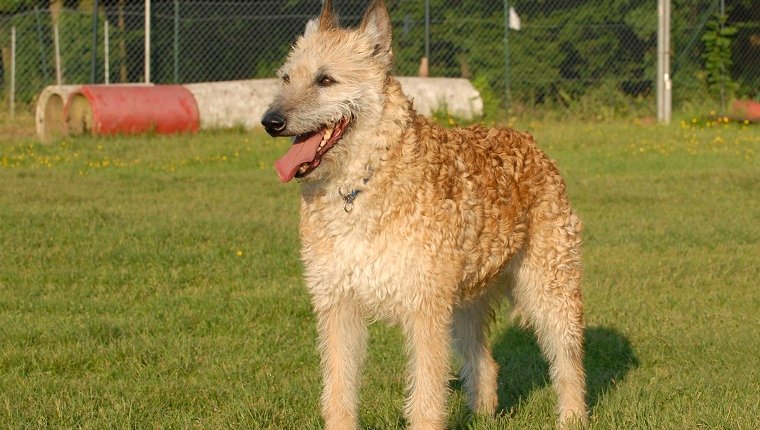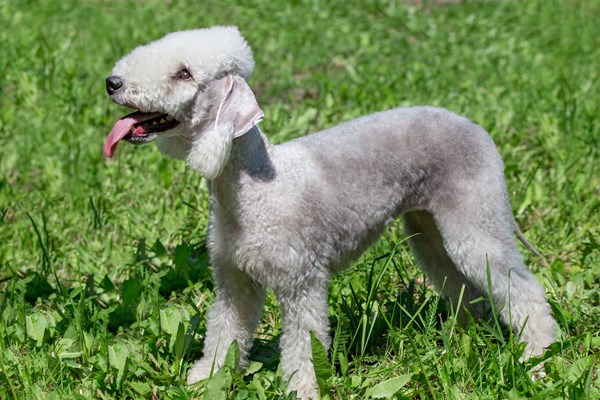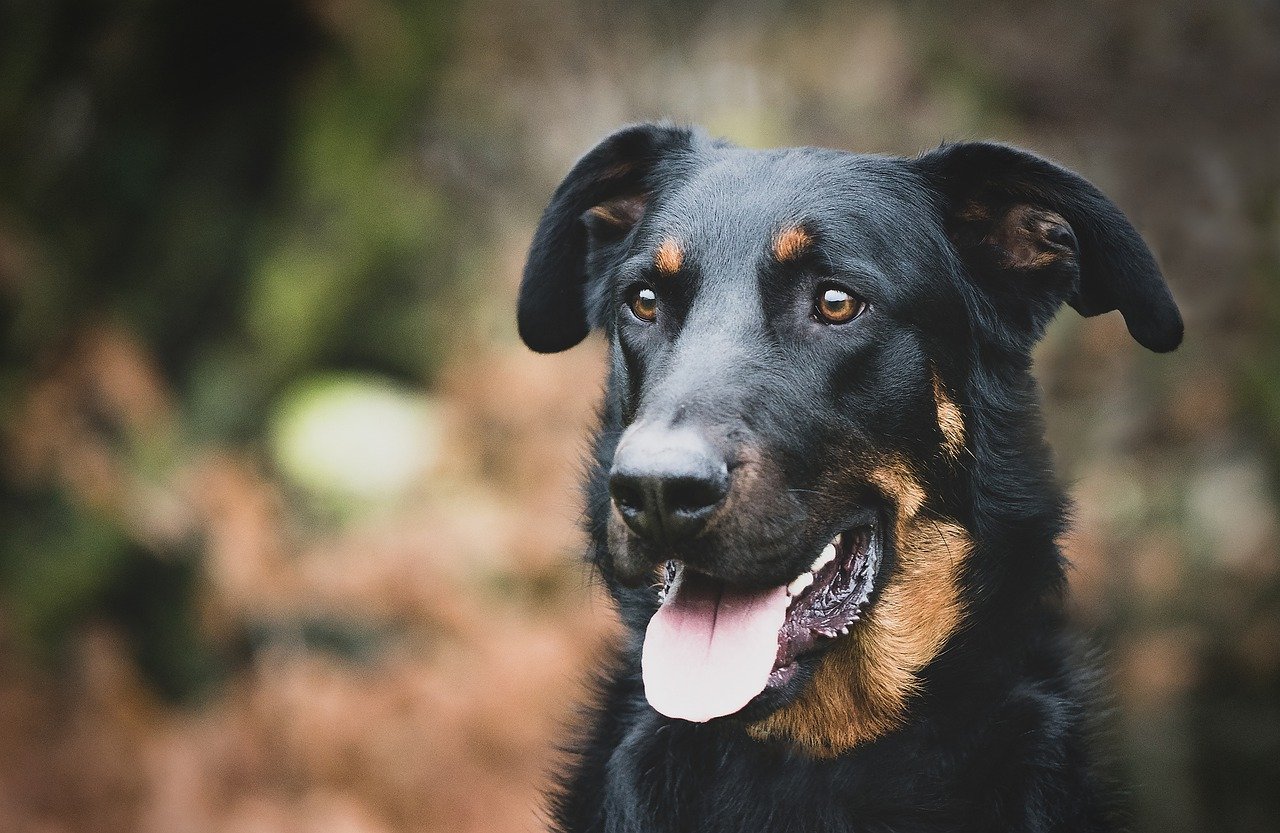The Azawakh Dog Overview
A dog breed named for the Azawakh Valley in the Sahara desert where they originated, this is a lean and swift hunter with a regal presence.
They’re proud but loyal and protective of their home and family.
Although these are rare, purebred dogs, you may find them in the care of shelters or rescue groups.
Azawakh Highlights
- Australian Shepherds need roughly 30 to 60 minutes of exercise a day, preferably with high-energy activities like playing Frisbee. They need a job to do as well, such as daily obedience training or competing in herding and agility trials.
- Australian Shepherds can be very destructive and if they’re not getting the exercise and mental stimulation they need.
- Aussies will alert bark to warn you if they see or hear something suspicious, and will protect their family and home with a surprising fierceness.
- Although Australian Shepherds have the reputation for needing wide-open space, they do just fine in cities if they get enough stimulation and exercise. They’re not good apartment dogs, though. You’ll want at least a small yard to help them get out some of their high energy.
- This herding dog’s pushiness with livestock can carry over into the home and, with a timid or inexperienced owner, he may assume the dominant role in the family. The breed needs a firm and confident owner — Aussies probably aren’t a good choice if you’ve never had a dog before.
- Australian Shepherds are average shedders, and their coat needs regular maintenance, including weekly brushing to keep it clean and prevent matting, and possibly trimming to keep it looking tidy.
- Aussies enjoy the company of their family and prefer to stick close to their human pack. They don’t do well stuck in the backyard by themselves for long periods.
- Aussies are by nature standoffish with people they don’t know, and unless they have regular exposure to lots of different people — ideally beginning in puppyhood — they can become fearful of strangers. This may lead to biting out of fear and aggression. Give your Aussie lots of contact with friends, family, neighbors, and even strangers to help him polish his social skills.
- To get a healthy dog, never buy a puppy from an irresponsible breeder, puppy mill, or pet store. Look for a reputable breeder who tests her breeding dogs to make sure they’re free of genetic diseases that they might pass onto the puppies, and that they have sound temperaments.
Azawakh Breed Features & Ratings:
Rated base on a 5 Star Scale
ENERGY LEVEL: 4 Star
EXERCISE REQUIREMENTS: 4 Star
PLAYFULNESS: 5 Star
AFFECTION LEVEL: 5 Star
FRIENDLINESS TO DOGS: 5 Star
FRIENDLINESS TO OTHER PETS: 5 Star
FRIENDLINESS TO STRANGERS: 5 Star
WATCHFULNESS: 5 Star
EASE OF TRAINING: 5 Star
GROOMING REQUIREMENTS: 5 Star
HEAT SENSITIVITY: 5 Star
VOCALITY 5 Star
Azawakh Characteristics:
- Dog Breed Group: Hound Dogs
- Height: At the shoulder, it should be between 23 and 27 inches tall.
- Weight: 33 to 55 pounds
- Life Span: 12 to 15 years
- Type: Purebred
- AREA OF ORIGIN: Mali
- DATE OF ORIGIN:
- OTHER NAMES: Idi, Hanshee, Oska, Rawondu, Bareeru, Wulo, Tuareg Sloughi
- Temperament: Affectionate, Aloof, Attentie, Fierce , Refined, Rugged, Loyal
- Activities:
- Color: Dark red, Blue, White, Black, All shades of brown
- Litter Size: 4 to 6 puppies
- Puppy Prices: $2000 – $2500 USD on average
Azawakh Health:
Azawakhs are generally healthy dogs, and a responsible breeder will evaluate breeding stock for health abnormalities like hypothyroidism, seizures, cardiac disorders, and autoimmune-mediated disease.
Azawakhs are slender, elegant dogs with thin skin that allows their bone structure and muscle to show through; owners should discover what a healthy Azawakh looks like.
Azawakh Grooming:
The short, smooth Azawakh coat is available in a wide range of colors, from clear sand to dark red, white, black, blue, gray, brindle, grizzle, parti-color, and all shades of brown, including chocolate. The stomach may be hairless.
A quick once-over with a hound glove should maintain your Azawakh’s coat in good condition.
Shampooing isn’t necessary regularly, but if you bath them, use a gentle, hypoallergenic shampoo because they have delicate skin.
Azawakh Exercise:
The Azawakh is an energetic breed that requires regular activity to keep both mind and body in good condition. Adult Azawakhs make excellent running companions.
A daily half-hour play session in a well-fenced field, park, or yard will suffice to keep the hound happy and healthy.
An Azawakh left alone in the yard, on the other hand, will not self-exercise. In the company of the owner or another dog, he is more likely to acquire the activity he requires.
Azawakh Training:
If they feel endangered, they may become overly protective of their territory and humans. Their attitude toward outsiders might range from pleasant to disinterested, suspicious to aggressive.
To avoid them having an excessive aversion to strangers, they will need early and appropriate socializing as well as continual positive reinforcement training around new people.
They can be rather outspoken if they take on the role of guardian.
Azawakh have a great attachment for people of their own species. It is not rare for Azawakh lovers to have more than one, and they are usually very close.
They frequently get along well in a multi-dog home, despite the fact that they can be domineering.
Azawakh Food and Nutrition:
It is critical to provide a high-quality, portion-controlled diet to any dog. The breed is naturally thin, and there is a propensity to overfeed them in order to “fatten them up.”
If you can see their ribs it does not imply that they are overweight.
Obesity can develop if you overfeed them. This can cause a slew of additional complications for them, as well as strain on their sensitive joints.
If in doubt, consult your veterinarian or a trained Canine Nutritionist.
Azawakh Temperament and Personality:
Azawakh are known for being intelligent, affectionate, and devoted to their family members. They are, nevertheless, generally independent in spirit.
They are most likely not the best dog for inexperienced owners.
Because of their distinct personalities, they may necessitate extensive additional training, and they are not necessarily appropriate for homes with small children.
Azawakh Care/Upkeep:
Azawakh are known for being intelligent, and affectionate and exceptionally loyal with their family members. They are still often independent in spirit, though.
They are probably not the best dog for novice owners. Their unique personalities mean they can require a lot of additional training, and they don’t always suit homes with young children.
They can sometimes become overly protective of their territory and humans if they feel threatened. Their reaction to strangers can vary from friendly, to uninterested, to wary or aggressive.
Early and appropriate socialization, and ongoing positive reinforcement training around new people will be important to avoid them developing an extreme reaction to strangers.
If they do take on the role of protector, they can be quite vocal too. Although they can get on well with cats, careful introductions should be made to ensure their chase instincts are not triggered.
You may have to work extra hard to achieve a solid recall if they are driven to chase. You should not allow them off-leash in open spaces until you have achieved this.
Like some other Sighthounds, they can be referred to as speedy couch potatoes. Providing they get enough daily exercise, and the opportunity to release some of their energy, they will often then be happy to laze around on the couch.
They have a low maintenance grooming regime and their coat will only need a rub down around once a week to keep it shiny and in good condition.
Their thin coat, minimal body fat and desert origins mean they don’t like the cold. In the winter months, you will need to make sure they are kept warm of their walks.
Azawakh Relationship with Children and Other Pets
The Azawakh might be a bit aloof with strangers, but when you manage to gain their trust, you will end up with a loyal, lifelong furry companion.
The Azawakh protects all members of its pack, whether they are on two or four legs.
However, it is best to get the young puppy used to being with other animals to learn not to chase them (cats, rabbits, etc.) and consider them as part of its family.
Thus, it is better to watch them when they are together and separate them when you are away.
Indeed, the Azawakh will get along well with small pets indoors but may forget that they are their friends if it sees them running outside.
It will certainly not hesitate to chase unfamiliar cats or other small furry animals, so it should always be led on a leash.
Also, keep in mind that the adjustment period might be even more difficult if you bring new animals into your home with an already adult Azawakh.
Azawakh Names
| Rank | Boy Names | Girl Names |
| 01 | Buddy | Molly |
| 02 | Max | Bella |
| 03 | Toby | Coco |
| 04 | Jack | Luna |
| 05 | Rocky | Abbie |
| 06 | Charlie | Daisy |
| 07 | Oliver | Zoey |
| 08 | Oscar | Stella |
| 09 | Jake | Roxy |
| 10 | Bailey | Penny |
All About Azawakh
The proud and elegant Azawakh, who hails from the Sahel region of the Sahara Desert, has long served as a guardian, hunter, and friend to tribes in that region. He takes his name from the Azawakh valley in the Sahara.
Azawakhs are compassionate and affectionate with their family, yet they can be wary of outsiders and loathe being touched by strangers.
They are also guardians of their people and property. Fans describe them as a fantastic blend of loyalty and independence.
They are attracted to action since they are sighthounds, and they are inclined to pursue animals, people on bicycles or skateboards, including running children.
These slender, powerful dogs, on the other hand, make terrific jogger and runner friends. They’re fairly inactive indoors and content to snooze on the couch.
They like a house with a large fenced yard or a nearby fenced park where they can run freely.
They require at least a half-hour of active exercise or play every day, and, while it may appear to be a slight to their dignity, you will need to dress your Azawakh in a sweater before venturing out in chilly weather.
They are quickly chilled due to their short hair and minimal body fat.
Azawakh History:
The Azawakh is a Sighthound native to West Africa’s Sahara Desert. They were originally raised to protect the livestock of their nomadic pastoralist masters, particularly the Tuareg.
They were particularly valued for their friendship and hunting abilities, and they frequently operated in packs. Because of their breeding, they are highly adapted to life in harsh desert conditions.
Their name is derived from the Azawakh Valley, which is located in the desert between Mali and Niger and translates to ‘Land of the North.’
In 1970, a Yugoslavian diplomat was given a male Azawakh by the nomadic tribe with whom he had built a relationship, and he subsequently bartered for a female. These were thought to be the first of their kind to be exported.
French civil officials and military forces stationed in the region then shipped more dogs. They were thereafter imported in the other areas of Europe and the U.S.
This breed is closely related to another African Sighthound known as the Sloughi, and they were originally known as the Sloughi-Azawakh. They were only identified as Azawakhs in 1980.
The American Kennel Club officially recognized them as an official breed in 2011, and they are still quite rare outside of their native Sahel region.
Where to Adopt Azawakh:
If you are contemplating on getting a puppy, you should do your research and select a reputable breeder, just like you would with any other dog.
Make certain that you can observe mom and her puppies together in a safe home environment.
Puppies should not be placed in new homes until they are eight weeks old and fully weaned. Due to the breed’s scarcity, you may need to be on a waiting list or go further afield to get a puppy.
The American Azawakh Association is a fantastic place to start your investigation.
It would be odd to come across an Azawakh during a rescue. Don’t forget that many other magnificent Sighthounds in shelters across the country seek their permanent homes.
Many could fit into family life more efficiently for a first-time owner than the difficult Azawakh.
More Dog Breeds and Further Research:
If you’re looking for canines like the Azawakh, you might be interested in the following:
Azawakh Fun Facts:
- The Azawakh is leggy.
- The Azawakh is an ancient breed from West Africa.
- The breed made its U.S. debut in the 1980s.
- Its name is pronounced Oz-a-wok.
- It has a short, fine coat.
- It’s a very active breed.
Frequently Asked Questions (FAQs):
In the United States, the Azawakh excels as a companion, guardian, and lure courser, as befits its heritage. This antique hunting hound is so slender and rangy that you can feel his bone structure and muscles beneath his skin.
64 kilometers per hour
As long as these teeth erupt properly through the gums and are not overly crowded, they are not dangerous and may even be regarded as normal in certain Azawakh. To avert the loss of more vital teeth, extra teeth that cause issues should be removed during an anesthesia dental operation.




